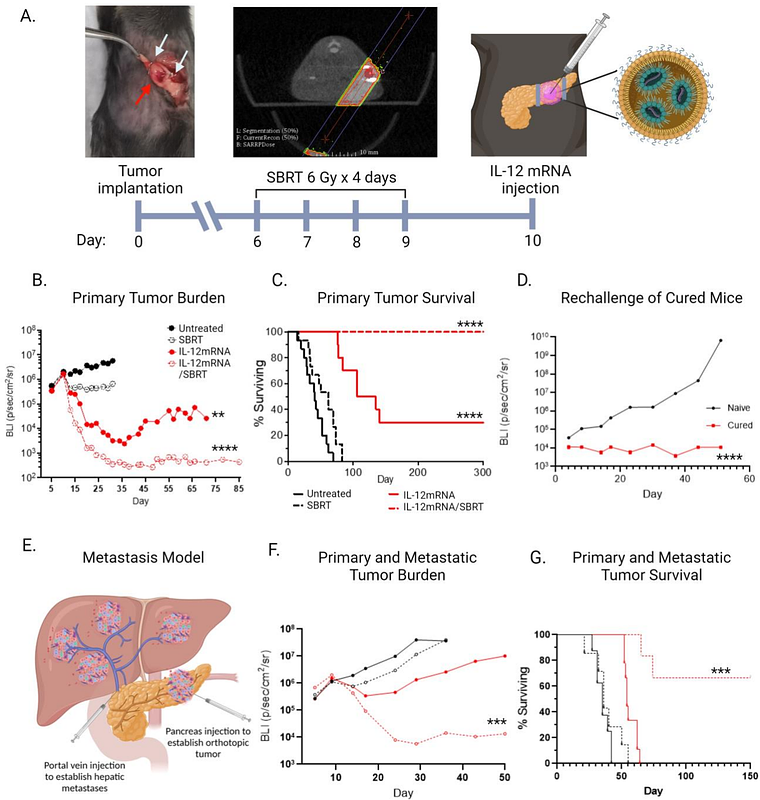Local Delivery of SBRT and IL12 by mRNA Technology Overcomes Immunosuppressive Barriers to Eliminate Pancreatic Cancer

Local Delivery of SBRT and IL12 by mRNA Technology Overcomes Immunosuppressive Barriers to Eliminate Pancreatic Cancer
Hughson, A. L.; Hannon, G.; Salama, N. A.; Vrooman, T. G.; Stockwell, C. A.; Mills, B. N.; Garrett-Larsen, J.; Qui, H.; Katerji, R.; Benoodt, L.; Johnston, C. J.; Murphy, J. D.; Kruger, E.; Ye, J.; Gavras, N. W.; Keeley, D. C.; Qin, S. S.; Lesch, M. L.; Muhitch, J. B.; Love, T. M. T.; Calvi, L. M.; Lord, E. M.; Luheshi, N.; Elyes, J.; Linehan, D.; Gerber, S. A.
AbstractThe immunosuppressive milieu in pancreatic cancer (PC) is a significant hurdle to treatments, resulting in survival statistics that have barely changed in 5 decades. Here we present a combination treatment consisting of stereotactic body radiation therapy (SBRT) and IL-12 mRNA lipid nanoparticles delivered directly to pancreatic murine tumors. This treatment was effective against primary and metastatic models, achieving cures in both settings. IL-12 protein concentrations were transient and localized primarily to the tumor. Depleting CD4 and CD8 T cells abrogated treatment efficacy, confirming they were essential to treatment response. Single cell RNA sequencing from SBRT/IL-12 mRNA treated tumors demonstrated not only a complete loss of T cell exhaustion, but also an abundance of highly proliferative and effector T cell subtypes. SBRT elicited T cell receptor clonal expansion, whereas IL-12 licensed these cells with effector function. This is the first report demonstrating the utility of SBRT and IL-12 mRNA in PC.